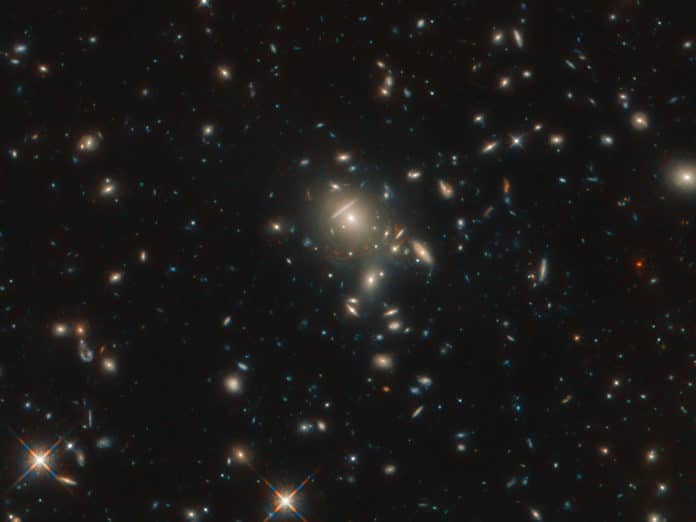A gravitational lens can occur when a huge amount of matter, like a cluster of galaxies, creates a gravitational field that distorts and magnifies the light from distant galaxies that are behind it but in the same line of sight. The effect is like looking through a giant magnifying glass.
Recently, NASA/ESA Hubble Space Telescope captured a starburst galaxy called PLCK G045.1+61.1, which is being gravitationally lensed by a cluster of closer galaxies. The universe located approximately 12 billion light-years away in the constellation of Boötes.
In the image captured by Hubble, the galaxy appears as multiple reddish dots near the center of the new image.
Astronomers noted, “From 2009 to 2013, the European Space Agency’s Planck space observatory captured multiple all-sky surveys. In the course of these surveys, with complementary observations by the Herschel Space Observatory, Planck discovered some of the brightest gravitationally lensed, high-redshift galaxies in the night sky.”
“It was during the study of these Planck-Herschel selected sources using Hubble that the optical starlight emitted from this ultra-bright galaxy was found.”
